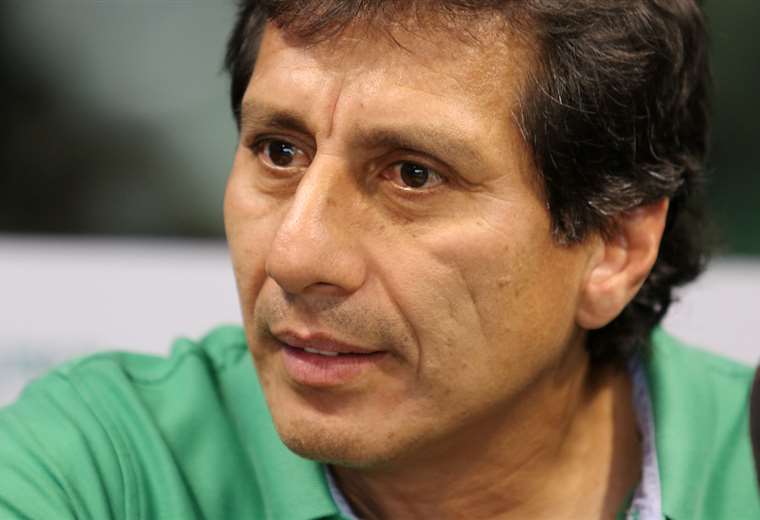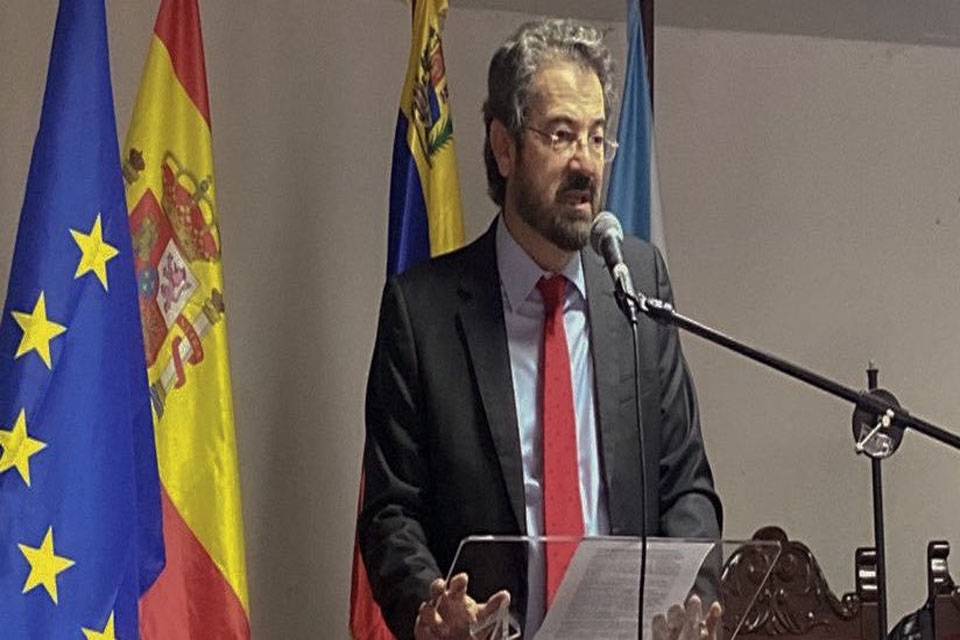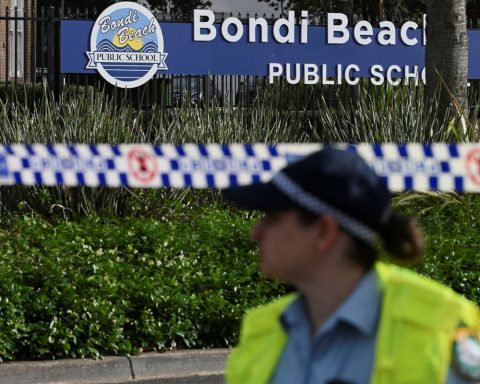Yoko Ono, the woman who could be defined as a pioneer of conceptual art, a tireless avant-garde or a precursor of punk music, but that nevertheless the mere mention of his name provokes an endless number of stigmatizing comments, he turns 90 this Saturday without getting his fair artistic recognition.
It is that the woman who was born on February 18, 1933 in Tokyo, Japan, He seemed to have sealed his fate when in 1966 he joined his life with that of John Lennon, the creative genius of The Beatles, adored by the masses, who was subliminally required by the cultural establishment to follow the conventional canons of life as a condition to maintain his stellarity.
Since then, the artist whose name was linked to the avant-garde artistic movement Fluxus and associated with figures such as John Cage, La Monte Young, Philip Glass, Marcel Duchamp or Peggy Guggenheim, He came to the fore as the person who had ruined John’s good walk and caused the breakup of The Beatles.
And although the assassination of the ex-beatle in December 1980 and the passage of time made things a little easier, the reality is that Her name is still used as a nickname when, from some macho aftertaste, one maliciously wants to allude to a woman who exerts a “bad influence”. on his male partner or that generates short circuits in some group of people.
Just one current example to mark the persistence of the stigmas that fall on Yoko Ono: when the fantastic documentary “Get Back” by Peter Jackson premiered in 2021, many users of social networks focused their attention on his omnipresence next to John -something of little relevance given the size of the visual and sound testimony-, but they did not make similar assessments with Linda Eastman or her little daughter Heather, a group of “Yogis” friends of George Harrison or different “cholulos” that swarmed around the studio.

The truth is that around 1966, when he met the famous beatle, who attended one of his exhibitions at the Indian Gallery in London, Yoko had some avant-garde works of relative importance to his credit, such as his performance “Cut Piece”, in which she invited the public to cut pieces of her clothing with scissors until she was almost naked, or “Bottoms”, a short in which 365 rears were seen in close-up with which she tried to show that “from behind, we are all the same ”.
He had also already edited “Grapefruit”, the famous book with instructions, based on haiku poems, which had its first publication in our country in 1970 by Ediciones de la Flor under the title “Pomelo”, with a translation by Susana “Pirí” Lugones, and which was recently republished by Alias. John Lennon recognized that it was from there that he took the inspiration for his famous song “Imagine”.
of course when His artistic concept, which sought to escape traditional forms and mercantilism, made a dent in John’s work, who for his part began to feel that he lived in a sort of “glass prison”, became the center of criticism and ridicule. No one tolerated that the man who had given the world perfect songs made incomprehensible records, full of random sounds and dadaist music; he will pose nude for one of his covers or campaign for peace through different performances.
But Yoko Ono was not exactly a lunatic who had ruined the beloved beatle, nor a mediocre artist who took advantage of her partner’s fame. Daughter of one of Japan’s richest banking dynasties On his mother’s side, he had classical musical training and studies in philosophy and plastic arts.
beyond its roots, much of his childhood and youth was spent in the United States, when his father, an amateur musician who became a banker at the behest of his wife, was transferred to that country. There she saw how the nation in which she lived attacked her native country with atomic bombs, which led her years later to embrace pacifist struggles.

Your intellectual concerns they brought her closer to the young people of the beat generation and made her a regular presence in Greenwich Village, that finished molding their avant-garde profile. Also in that context she met her first husband, the Japanese composer Toshi Ichiyanagi, with whom she deepened her bohemian lifestyle, which meant that she was disinherited by her wealthy family.
With her husband she decides to return to Japan, but for the first time he feels that his art is undervalued and suffers from some psychiatric disorders because of it. The process to get out of that depressive state led to a divorce and a return to New York, where he produced some of the works mentioned above, definitively established himself as a figure in the avant-garde world, and married an unknown musician from jazz named Anthony Cox, with whom she will have a daughter named Kioko.
On August 29, 1966, The Beatles offered their last concert in San Francisco and decided to put an end to the maelstrom of tours. In this temporary stoppage of the group activity, for the first time, its four members stopped seeing themselves as part of a group and their concerns as individuals surfaced.
Fed up with public adoration, with the demands of a perfect personal life, and nostalgic for the rebellion that rock and roll had renounced, John Lennon attended one of the many artistic activities to which he was invited: in this case, a sample of the avant-garde Yoko Ono at the Indian Gallery.
Nothing was ever the same for either of them. For John it was finding the answers to get out of the artistic and personal maze in which he found himself. For Yoko it was, as Lennon himself once said, becoming “the most famous unknown artist in the world.”
With the crush between the two came the notorious divorces: John’s, surrounded by the general disapproval of society and the consequent stigmatization of his new partner. Yoko’s, with the painful loss of possession of her daughter, whom she could not see again for 23 years.
A better known public story ensued, with joint campaigns for peace, John’s disinterest in The Beatles and the band’s subsequent split, a handful of experimental records that only garnered ruthless criticism, a troubled permanent residence in New York with political persecution from the Richard Nixon government, the birth of their only child in common, Sean, and their retirement from public life around 1975 for a period of five years.
The public gaze seemed to start to become friendlier towards the couple in 1980. John decided to return to music with the album “Double Fantasy”, in which he returned to his perfect songs, and Yoko joined with compositions that eluded the high-pitched screams that years ago had been the object of ridicule. There, “Kiss, Kiss, Kiss” stood out, a song that became fashionable in New York nightclubs, with the brilliant interpretation of Yoko, who faked an orgasm at the end.
But there was also a reassessment of his musical career based on the statements of the members of the group B’52, who pointed to the Japanese artist as their great influence, or from critics who saw the same thing in many punk singers. For the musical world, Yoko was no longer the person who had ruined Beatle John, but a figure with its own weight.
John’s murder in December 1980, in front of his very eyes, threw a cloak of mercy over the figure of Yoko in the eyes of the whole world, although some legal disputes in the ’80s with Paul McCartney around the work of The Beatles once again cast some shadows on her.
HAPPY BIRTHDAY YOKO!
To celebrate Yoko Ono’s 90th birthday on 18 Feb 2023, @SeanOnoLennon has made a virtual ‘Wish Tree’ for people all over the world to post their wishes online and (in association with @OneTreePlanted) plant real trees in Yoko’s honor.https://t.co/TRZsPoh8l5 pic.twitter.com/YPu8akoqFP— Yoko Ono (@yokoono) February 16, 2023
At 90 years old and in deteriorating health, the artist finally found some recognition and has managed to win the affection of the majority.especially from old lovers of The Beatles, although some mockery and malicious comments still survive.
The Argentines had the opportunity to express their admiration when he visited the country in 1998 on the occasion of an exhibition at the Recoleta Cultural Center. There was another exhibition in 2016 at Malba but he couldn’t come due to mobility problems.
Despite being in a wheelchair and showing himself less and less publicly, Yoko is still active through Twitter, where almost daily she continues to leave messages as instructions, as in her book “Grapefruit”. Long live Yoko.















